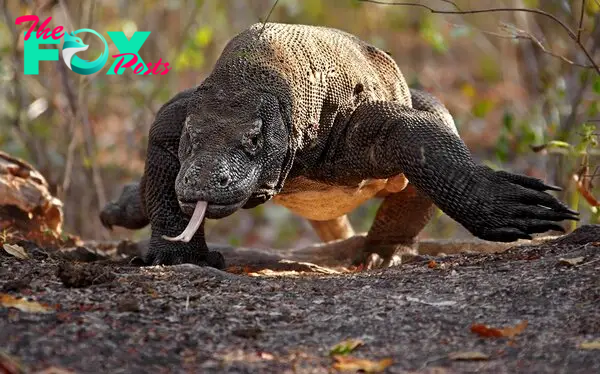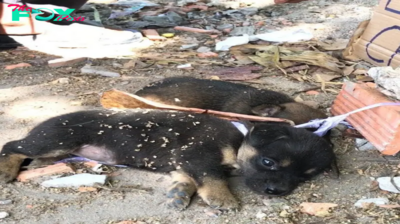Pet
Komodo Dragon: Unveiling the World’s Largest Lizard and Its Unique Adaptations

The Komodo dragon (Varanus komodoensis) stands as a formidable testament to evolution’s grandeur, reigning supreme as the largest lizard species on Earth. Endemic to the Indonesian islands of Komodo, Rinca, Flores, Gili Motang, and Padar, this iconic reptile captivates with its impressive size, predatory prowess, and intriguing biological adaptations.
Majestic Size and Appearance
Weighing up to 150 pounds (70 kilograms) and reaching lengths of up to 10 feet (3 meters), the Komodo dragon coMMAnds attention with its robust build and intimidating presence. Its scales, ranging from gray to reddish-brown, provide armor-like protection against the harsh volcanic landscapes it inhabits.
Unique Biological Adaptations
One of the Komodo dragon’s most distinctive features is its venomous bite. Unlike typical venom that incapacitates prey quickly, the dragon’s saliva contains a potent mix of bacteria, causing a slow, debilitating infection in its bitten victims. This adaptation allows the dragon to track and consume prey over several days, including water buffalo, deer, and even smaller dragons.

Habitat and Behavior
Found primarily in dry open grasslands, savannas, and tropical forests, Komodo dragons are proficient hunters and scavengers. They possess keen senses of smell and vision, which they use to detect carrion from kilometers away. Despite their solitary nature, they congregate around carcasses, showcasing both cooperative and comPetitive behaviors during feeding.
Conservation Challenges
Despite their fearsome reputation, Komodo dragons face significant threats to their survival. Habitat loss due to human activities, including agriculture and tourism development, poses a direct threat to their dwindling populations. Conservation efforts are crucial to protecting these ancient creatures and preserving their fragile island habitats.

Conservation Efforts
International conservation organizations and Indonesian authorities have implemented various initiatives to safeguard Komodo dragons. These include habitat preservation, population monitoring, and community Education programs aimed at fostering coexistence between local communities and these apex predators.
Cultural Significance and Tourism
Beyond their ecological importance, Komodo dragons hold cultural significance in Indonesia, attracting thousands of tourists annually to Komodo National Park. Responsible tourism practices are essential to minimize human impact on their habitats while promoting awareness of conservation needs.

Conclusion
The Komodo dragon stands as a living testament to the marvels of evolution and the delicate balance of ecosystems. By prioritizing conservation efforts, raising awareness, and fostering sustainable practices, we can ensure that future generations continue to marvel at the Komodo dragon’s grandeur and resilience in its natural habitat.
-

 Pet1m ago
Pet1m agoCelebrating Me: A Journey of Self-Love and Independence on My 5th Birthday.lamz
-

 Pet1m ago
Pet1m agoHeroic Rescue and Heartwarming Adoption: A Brave Police Officer’s Unforgettable Journey with an Adorable Puppy.hanh
-

 Pet1m ago
Pet1m ago¡Felicidades en tu día! Tranquilo, ¡los mejores deseos siempre llegan cuando tienen que llegar!.lamz
-

 Pet1m ago
Pet1m agoFrom Abandoned to Empowered: A Dog Reclaims Its First Steps After Being Left Behind.hanh
-

 Pet1m ago
Pet1m agoA Silent Celebration: My Birthday 🎂🎁🎈🎉 Without Wishes Yet.hanh
-

 Pet1m ago
Pet1m agoA pesar de una década de devoción, Annie fue cruelmente abandonada como si no fuera nada cuando su dueño se fue.lamz
-

 Pet2m ago
Pet2m agoFrom Neglect to Nurture: Transforming a Skeletal Stray Dog with Unconditional Love.hanh
-

 Pet2m ago
Pet2m agoAn inspiring tale of rescuing two innocent puppies from heartless sellers, emphasizing the importance of compassion and protection for vulnerable animals.hanh


























